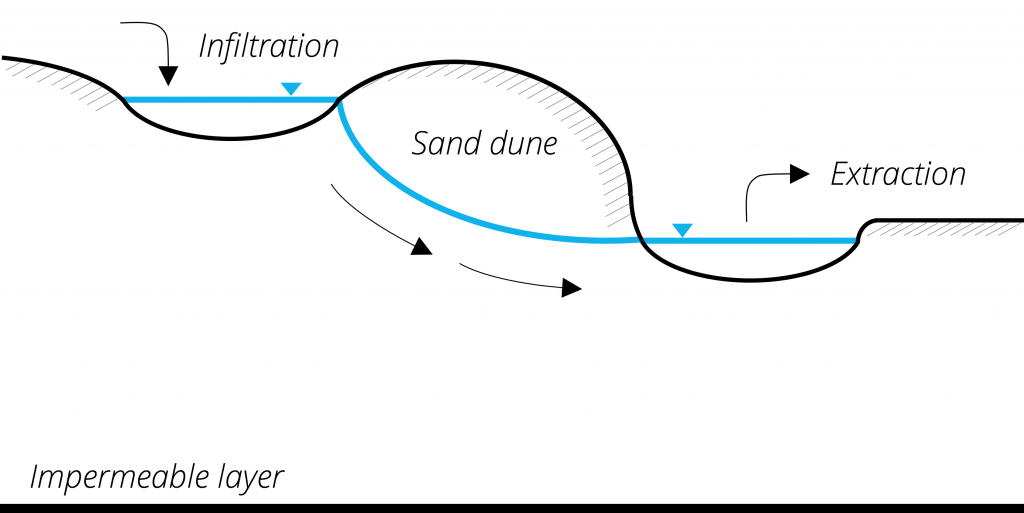
For dune filtration surface water is infiltrated into the dune system and after soil passage retrived by pumping on a well gallery or lower lying ponds. This process serves as an additional treatment step improving the water quality of the infiltrated water. The passage of water through the dune system removes dissolved and suspended pollutants and pathogens by chemical, physical and biological processes.
| Typical system capacity scale | Village – Town (≈104 m3/year – higher than 106 m3/year). |
| Geology | Unconfined sediments. |
| Topography | Dunes. |
| Soils | Sand, gravel. |
| Water source | Rain water, river water, treated wastewater. |
| Pre-treatment | Dependent on source water – coagulation and sedimentation. |
| MAR main objective | Improvement of water quality. |
| Relative cost | Medium. |
Advantages and disadvantages of the system (adapted from IGRAC, 2007):
Advantages
- Large quantities of water can be withdrawn.
- Pollutants contained in source water may be removed by filtration processes.
Limitations
- Intensive monitoring of system performance is required.
- High potential for clogging.
Case studies
References
- IGRAC. (2007). Artificial Recharge of Groundwater in the World.
- DEMEAU. (2014). Characterization of European managed aquifer recharge (MAR) sites – Analysis.
